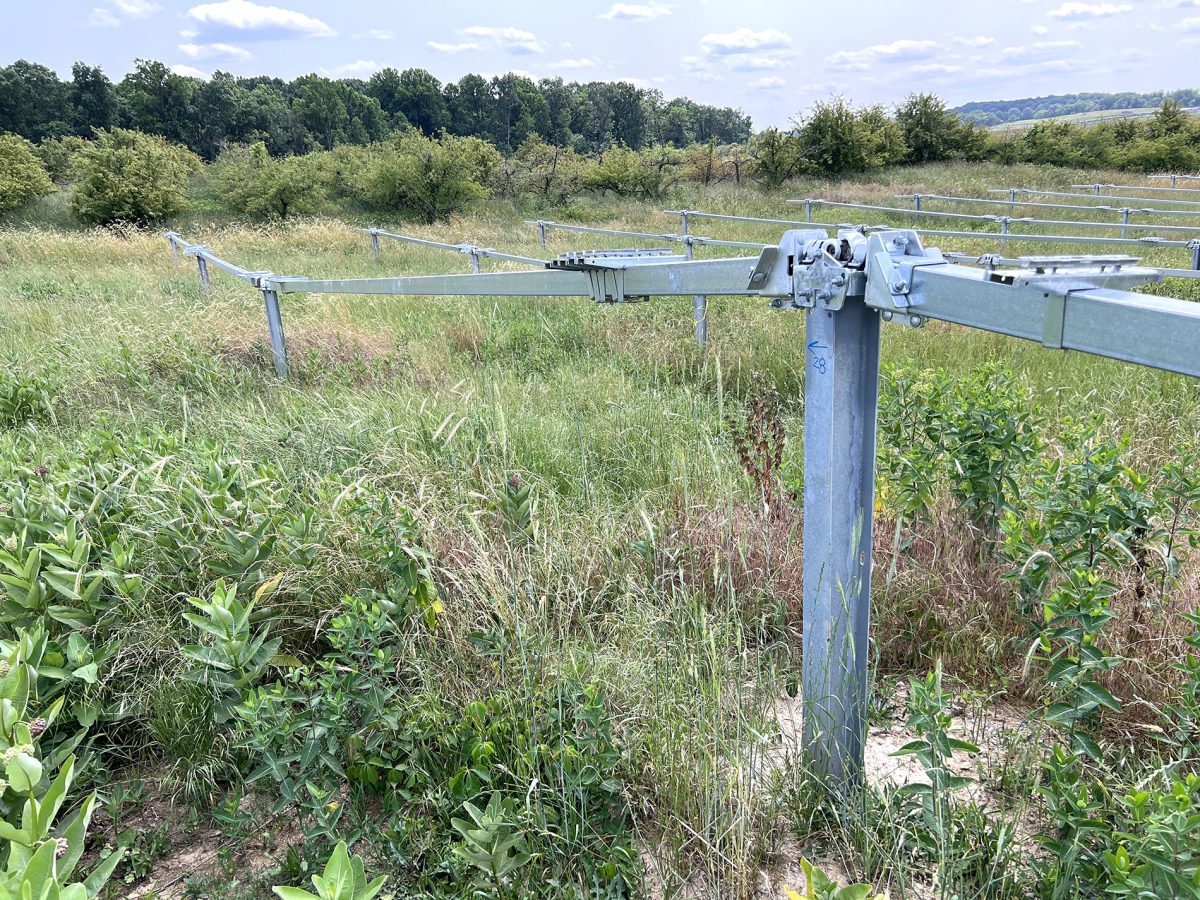A crucial part of any large-scale solar project is managing and preserving native vegetation in the area. As a developer or EPC, it’s important to implement strategies before, during, and after construction to ensure the surrounding environment is kept in good condition. Without careful consideration of the vegetation around a solar site, it may be difficult to close project permits, causing lengthy delays and, in some cases, hefty lawsuits.
Solar farm vegetation management promotes the growth of native vegetation and keeps plant life thriving throughout the length of a project. This blog will explore the practice in depth while providing strategies to implement it for a large-scale solar site.

What Is Solar Farm Vegetation Management?
Simply put, solar farm vegetation management is the practice of maintaining vegetation on a solar site. The process may involve:- Planting seeds of native vegetation before construction
- Preserving and replacing topsoil after project completion
- Keeping vegetation at optimal heights
Overview of the Importance of Solar Farm Vegetation Management
Below are several reasons why vegetation management is important for utility-scale solar farms.Project Completion
If solar site damage disrupts the ecosystem and vegetation cannot regrow, EPCs won’t be able to close permits and finish a construction project.Enhanced Safety
Without proper vegetation management, solar sites may be more vulnerable to fire, flooding, erosion, or mudslides, all of which pose serious safety risks.Property and Asset Preservation
Managing vegetation and limiting overgrowth will lower the risk of damage to equipment or other properties near the project site.Avoid Legal Issues
EPCs that fail to implement a vegetation management plan can be at risk of lawsuits from landowners for environmental damage.Environmental Protection
Vegetation management practices help make solar development more sustainable by maintaining soil health, protecting native plant life, preserving local natural habitats, and stabilizing land.Efficient Power Generation
Vegetation management prevents plant overgrowth that causes shade and limits the energy production and effectiveness of a solar site.Strategies for Maintaining Vegetation on Solar Farms
Vegetation management plans should be specific to each site. For the best results, be sure to create a strategy that includes a variety of tactics. Here are several steps to consider when implementing the practice:Reduce or Eliminate Grading
Maintaining vegetation becomes far easier when you can prevent the damage to begin with. By reducing or eliminating grading on a solar site, EPCs and development teams can avoid stripping topsoil and removing vegetated areas. This also negates the need for costly, time-consuming practices such as topsoil replacement after a project is complete. The key to grade-free solar is using terrain-following trackers like the All Terrain Tracker® (ATT) from Nevados.Pre-Construction Seeding
This should be standard procedure for all utility-scale solar projects. Before construction begins, take time to plant seeds of native plants in the area. The goal is to provide a vegetated site before starting a project rather than trying to reverse damage later. Be sure to collect soil samples to determine optimal seed mixes before planting.Monitoring Solar Site During Project
If a solar farm is designed in such a way that solar panels completely cover the soil, there won’t be enough water and sunlight to reach the surface. This can affect soil quality and inhibit vegetation growth under the panels. To avoid this, be sure to maintain and monitor the soil throughout the entire duration of a project. Ideally, EPCs should inspect soil and vegetation at least two times per year.Mowing
Another important aspect of vegetation management is mowing. This helps maintain vegetation at an ideal height, which is essential for its health and density. Mowing is also necessary to avoid overgrowth. Considering large-scale solar farms occupy extensive tracks of land, vegetation management through mowing is expensive — so be sure to determine specific areas that need to be addressed rather than mowing the entire site.Topsoil Replacement
In most solar projects, it’s necessary to strip the topsoil before construction. One common strategy to manage vegetation is to stockpile the original topsoil so it can be replaced after the project is complete. During the project, stockpiles should be seeded and stabilized to preserve soil health and reduce erosion. Again, these requirements are minimized by reducing grading in the first place.Streamline Your Solar Project With the Nevados All Terrain Tracker®
To further improve both the efficiency and sustainability of your projects, the All Terrain Tracker® from Nevados eliminates the need for mass-grading using innovative terrain-following technology. Without grading, it’s not only easier to preserve soil and manage vegetation, but it also streamlines the entire construction process. Contact us today to learn more about how the All Terrain Tracker® can simplify your solar project and make the vegetation management process easier.



